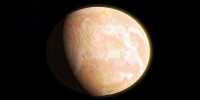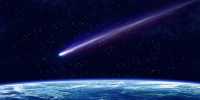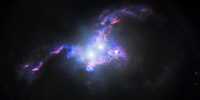Over the past 15 years, scientists without academic training have taken on a more revolutionary role. Every discipline has been impacted by the rise of citizen science, and new initiatives are launched each month to involve the public in cutting-edge scientific puzzles and to inform and solicit their assistance.
By all measures, including regular people in research has been extremely useful, whether it be for new discoveries, data analysis, or new strategies for engaging the public. Though it should be a shared inheritance of humanity, science has far too frequently alienated the general population. But that’s over. There are literally hundreds of different ways to participate if you want to. Playing a smartphone game can support cancer research, or you could participate in one of the most rigorous tests of a quantum mechanics tenet.
Searching for New Worlds While Preserving the Earth: The classification of enormous data sets by citizen scientists has undoubtedly transformed astronomy. If you have hundreds of thousands of photographs, you either need one student with a very narrow focus or plenty of individuals who can provide a hand. That served as Galaxy Zoo’s launchpad. I’m requesting help from internet users to categorize a few galaxies in exchange for their time and attention. The “Zooniverse” has expanded into a vast array of sectors with projects ranging from literature to medicine, all made possible by the tens of thousands of volunteers who helped with the initial task.
The company Unistellar developed its telescopes with the idea that astronomy is a good field for citizen science. Their equipment automatically recognizes what they are looking at in the sky, enables the observation of extremely weak things by gathering light, and can be utilized even in urban areas thanks to specialized software.
Unistellar has been able to carry out some pretty impressive scientific campaigns by connecting hundreds of people with these telescopes all over the world, from confirming the existence of exoplanets around other stars to figuring out the characteristics of Near-Earth asteroids that could one day threaten our planet. We are democratizing astronomy by opening up scientific inquiry to everyone. “Unistellar was founded to democratize astronomy.
The business and NASA are collaborating on a number of initiatives, including some involving exoplanets and another involving the Lucy mission, which was launched last year. Marchis also mentioned how some community members are currently doing their own exoplanet observations.
“I also appreciate the diversity. These individuals converse despite not knowing one another. They come from different nations and speak different languages. What we do is akin to a terrestrial network. Together, all humans are witnessing and advancing science, Marchis continued.
The Jungle’s Influencers: Without the burdensome presence of people, camera traps are a fantastic tool for studying animals in their natural habitat. They can provide information to biologists regarding an animal population’s size, movement, behaviors, and more. They occasionally display species that we were unaware were in that habitat.
Since the teams using this method are typically relatively small and camera traps collect thousands of photographs, the amount of data to sort through may be overwhelming for a small group of people. Instant Wild comes into play in this situation. By making these photographs accessible to the public, the Zoological Society of London hopes to speed up the process of classifying the various species that can be seen in them.
You don’t have to be an expert to participate in Instant Wild, which is one of my favorite aspects of the game. In the background of the program, we use a consensus process, which essentially implies that until 10 people have tagged an image with the same species. One image, for instance, contains ten tags for wolves. A result isn’t produced until that occurs, according to Kate Moses, ZSL’s project manager for Instant Wild, in an interview with IFLScience.
The method ensures that errors are irrelevant when hundreds of identifications are made. The minority includes them. This makes it simpler for people to sign up because they know that making mistakes is not a huge problem.
On the platform right now, 18 projects are active. The initiative initially only used live feeds from the field, but it has subsequently grown to also incorporate pre-recorded images. The platform’s expansion demonstrates the efficacy of the strategy.
We’ve created a pretty great user community, which is what I would call a really successful development. They are, in my opinion, the most welcoming, helpful, and kind group of people you will ever meet. They’re fantastic and always willing to assist.
Astronomy and the Arts: Judy Schmidt may not be a household name, but we can guarantee that you have seen her works especially in the most recent months. She is one of many people that analyze astrophysical photos from spacecraft, telescopes, and robotic missions. The European Space Agency and NASA have both highlighted her work, particularly with JWST. Her work is stunning, ranging from odd shells around stars to far-off galaxies to a beautiful vista of Jupiter.
The processing of NASA’s data is really encouraged by the organization. Schmidt became interested in this project in this way. More and more missions and initiatives are attempting to engage the public by creating pages for their unprocessed photographs. Once more, it comes down to how much information there is and how many eyes are better than a few.
“The outreach workers, who are paid to do it, don’t have time to analyze all the data. Because there is just so much information available and there are so many various methods to actually evaluate the data, I do it and try to encourage others to do it.
The way citizen scientists merged the images from the various filters is not only an artistic endeavor since the robotic explorers we send out into the universe don’t see the universe as we would with our naked eyes. They reveal information that was important to them and, frequently enough, is also important from a scientific standpoint. a wonderful illustration of how science and art may combine to produce something that is much greater than the sum of its parts.
















